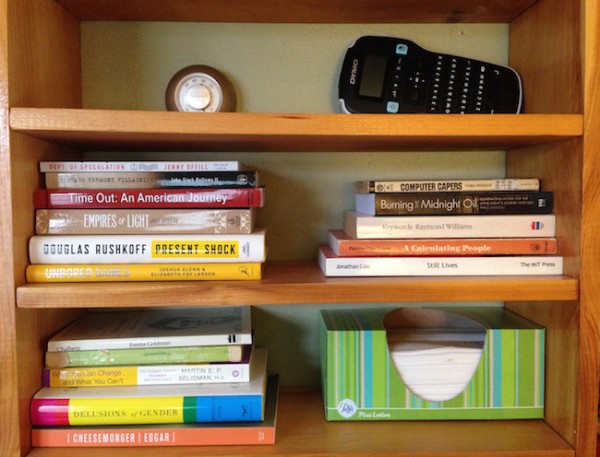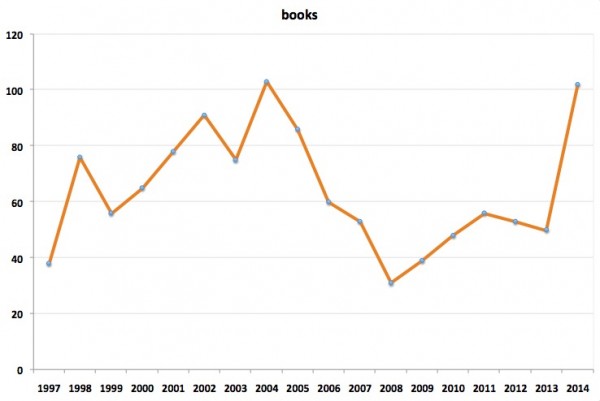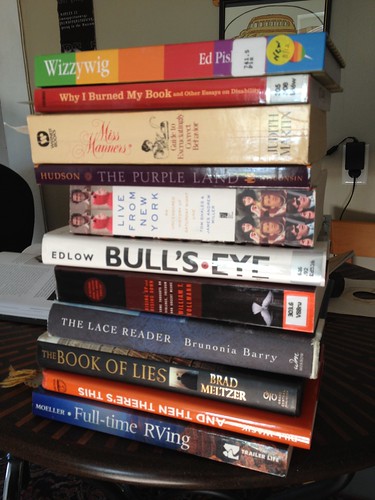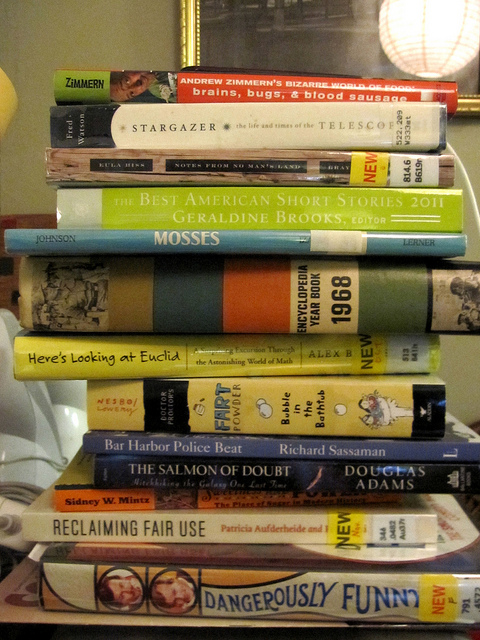
I started 104 books this year and finished 102. This year’s goals were twofold: read more books than last year, and read more diversely. I got the first goal accomplished but sort of at the expense of the second goal. I tried to get into a good daily reading pattern, and dug in to some book series. This meant that when I finished up the books by Archer Mayor, I had just read a large number of books by yet another white guy from New England. I didn’t read as many books by women as I’d wanted. I read a higher percentage of books by non-white, non-Western authors but I still need to do a lot better. I’m really happy to have managed a lifestyle where I read almost every day, off screen, for 30 minutes or more. Now I need to get choosier about what I am reading.
average read per month: 8.67
average read per week: 2
number read in worst month: 7 (Jan/July/Sep)
number read in best month: 11 (May)
number unfinished: 2
percentage by male authors: 79
percentage by female authors: 21
percentage of authors of color: 8
fiction as percentage of total: 70
non-fiction as percentage of total: 30
percentage of total liked: 93
percentage of total ambivalent: 7
percentage of total disliked: 0
A few book-specific notes. I really enjoyed Archer Mayor’s books and am now caught up. I recommend them to anyone looking for a place-based set of cop procedurals. I read almost every book suggested in this Ask MetaFilter thread and I enjoyed most of them. I also read a bunch of YA-ish techie nerdish books like Soon I will be Invincible and Ready Player One which are great books that any people who spend a lot of time online will enjoy. Many of the graphic novels I read were published by First Second and I probably need to read more books by them. I also enjoyed some local New England books both fiction (The Lace Reader) and non-fiction (Bootleggers, Lobstermen & Lumberjacks). One of the things that is odd about reading this many more books than last year is that the books from earlier in the year seem like I read them forever ago and they fade into distant memory. 2014 seemed long in mostly good ways. I also have a few books that I am halfway done with and they have been halfway done for months. I need to find a new way to kick books more quickly to the “unfinished” list. Here’s a chart for this information instead of a long list of numbers. I’m more concerned with trends than specific numbers.

Previous librarian.net summaries: 2013, 2012, 2011, 2010, 2009, 2007, 2006, 2005, 2004. My always-updated booklist lives at jessamyn.info/booklist and it has its own RSS feed which is mostly not broken.
If you’ve made a reading list for last year, I’d love to read it. Happy New Year.

